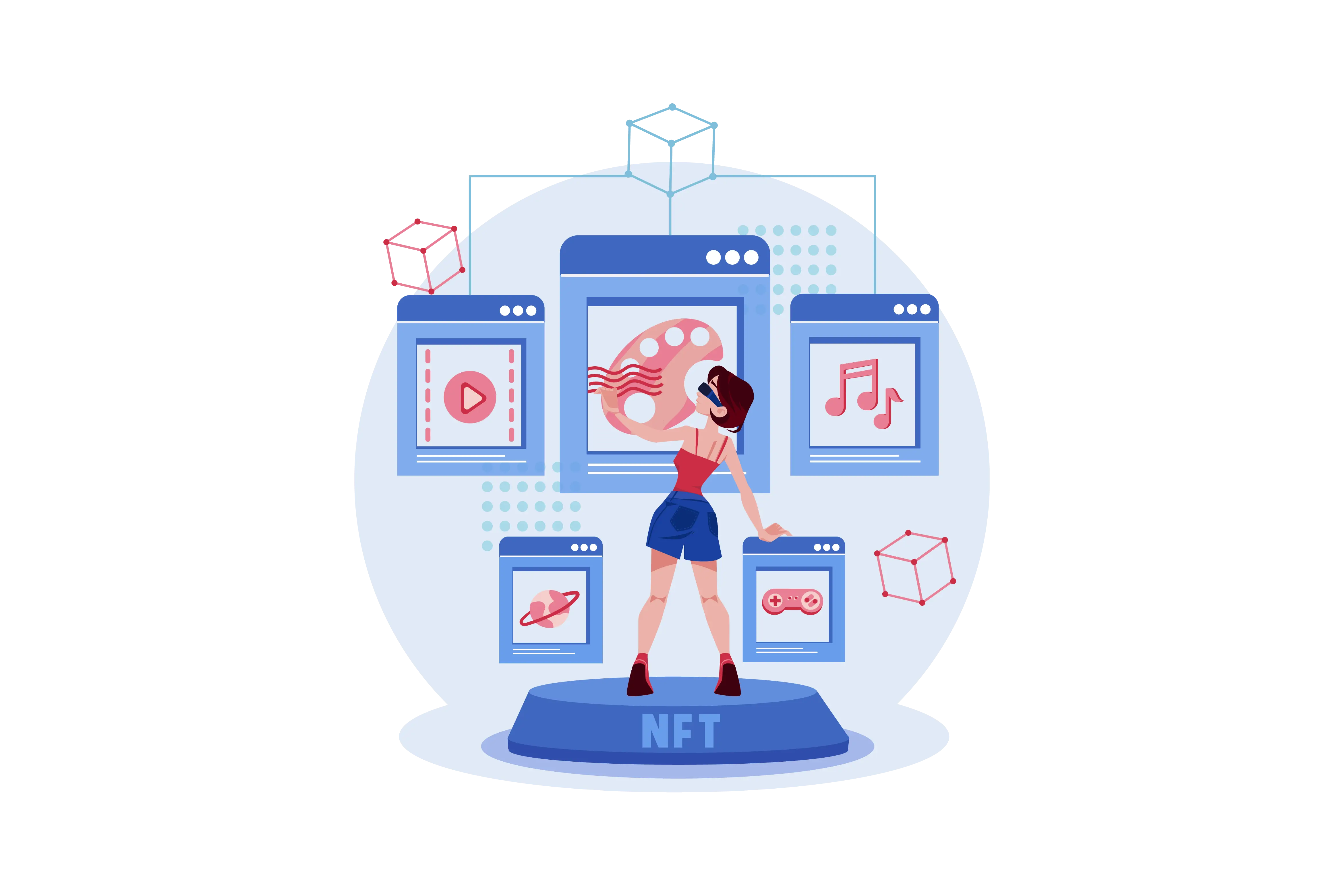The Evolution of File Sharing: From Napster to Blockchain
File sharing has come a long way since the early days of Napster, which allowed users to share music files with each other. Over the years, technological advancements have led to the development of more sophisticated peer-to-peer (P2P) networks, such as BitTorrent, which allowed users to share all kinds of files, including movies and TV shows. Today, blockchain technology is poised to revolutionize file sharing once again, offering new levels of security and privacy.

The historical context of file sharing is important to understand how we got to where we are today. The early days of file sharing were characterized by centralized networks like Napster, which were eventually shut down due to legal challenges. This led to the development of decentralized P2P networks like BitTorrent, which were more difficult to shut down. Today, blockchain technology is being used to create even more secure and decentralized file sharing networks.
Technological advancements have played a key role in the evolution of file sharing. As internet speeds have increased and storage costs have decreased, it has become easier and more efficient to share large files over the internet. The rise of cloud computing has also made it possible to upload and store files remotely, making them accessible from anywhere in the world. With blockchain technology, file sharing is poised to become even more efficient and secure, with the ability to share files without the need for a centralized intermediary.
Key Takeaways
File sharing has evolved from centralized networks like Napster to decentralized P2P networks like BitTorrent and now to blockchain-based networks.
Technological advancements have made file sharing more efficient and accessible, allowing users to share large files over the internet and store files remotely.
Blockchain technology offers new levels of security and privacy for file sharing, with the potential to create even more efficient and decentralized networks.

Historical Context of File Sharing
The Birth of Peer-to-Peer Networks
File sharing has been around since the early days of the internet, but it wasn't until the advent of peer-to-peer (P2P) networks that the practice really took off. The first P2P network was created in 1999 by Shawn Fanning, a college student who developed Napster, an application that allowed users to share music files with each other directly, without the need for a central server.
Many of us remember those times when we were teens not keen on buying CDs, and how excited we were about what Napster brought to the table. This service totally changed how we got our music, kicking off a huge change in how we enjoyed movies, songs, and more. The old days of going to the store to check out CDs were over. Instead, we could find tons of songs with just a quick click.
Napster's Rise and Legal Challenges
Napster quickly became popular, with millions of users sharing music files across the internet. However, the music industry was not happy about this development, as they saw it as a threat to their profits. In 2000, the Recording Industry Association of America (RIAA) filed a lawsuit against Napster, claiming that the service was facilitating copyright infringement.
The legal battle between Napster and the music industry lasted for several years, with Napster ultimately losing the case and being forced to shut down its service. However, the legacy of Napster lived on, as it paved the way for other P2P networks and file sharing services.
Post-Napster File Sharing Evolution
After Napster, several other P2P networks emerged, including Gnutella, eDonkey, and BitTorrent. These networks allowed users to share not just music files, but also movies, software, and other types of files. However, they also faced legal challenges from the entertainment industry, which saw them as a threat to their profits.
In recent years, the rise of blockchain technology has led to the development of decentralized file sharing networks, which allow users to share files without the need for a central authority. These networks, such as IPFS and Filecoin, are seen as a way to circumvent the legal challenges faced by traditional P2P networks, and could potentially revolutionize the way we share files online.
Technological Advancements
File sharing has come a long way since the days of Napster. With the advent of new technologies, the landscape of file sharing has evolved from centralized systems to decentralized networks, and from peer-to-peer (P2P) to cloud storage. In this section, we will explore the technological advancements that have shaped the evolution of file sharing.
From Centralized to Decentralized Systems
The earliest file sharing systems, like Napster, were centralized. This meant that all users connected to a central server to share files. This model was easy to use, but it was also vulnerable to shutdowns and legal challenges, which is what happened to Napster. The emergence of decentralized systems, like BitTorrent, changed this.
Decentralized systems are peer-to-peer networks that allow users to connect directly to each other to share files. There is no central server involved, which makes it much harder to shut down the network. Instead, the network is maintained by the users themselves. This model has proven to be much more resilient, and it has allowed for the development of new file sharing applications.
The Role of Torrents
Torrents are a type of decentralized file sharing system that has become very popular in recent years. Torrents work by breaking files into small pieces and distributing them across the network. Users can then download these pieces from multiple sources simultaneously, which makes the download process much faster. This model is also more efficient because it reduces the strain on any one user's bandwidth.
Torrents have become the go-to method for sharing large files, like movies and software. They have also been used for more nefarious purposes, like sharing copyrighted material. Despite this, torrents remain a popular and effective way to share files.
The Emergence of Cloud Storage
Cloud storage has emerged as a new way to share files. Instead of relying on P2P networks, cloud storage allows users to store files on remote servers and access them from anywhere with an internet connection. This model is convenient because it eliminates the need for users to keep their devices connected to the network to share files. It also allows for easy collaboration and sharing among multiple users.
Cloud storage services like Dropbox, Google Drive, and OneDrive have become very popular in recent years. They offer a range of features, from automatic syncing to advanced security options. While cloud storage is not without its drawbacks, it has become an important part of the file-sharing landscape.
Adding to the cloud storage revolution, a tool like DriveUploader is redefining how we manage file sharing even further. DriveUploader simplifies the process, enabling end users to upload files directly to your Google Drive. This not only streamlines collaboration but also enhances the security and organization of your data. It's incredibly user-friendly, meaning you don't have to be tech-savvy to use it. You can easily integrate it into your workflow, whether for business needs, academic purposes, or personal projects. I invite you to experience the ease of DriveUploader and discover how effortlessly you can let others share their files with you, directly uploading to your Google Drive, ensuring a smooth, efficient, and hassle-free file management system.
Blockchain Technology in File Sharing

Understanding Blockchain
Blockchain technology is a decentralized digital ledger that records transactions in a secure and transparent manner. In the context of file sharing, blockchain provides a way to distribute files without relying on a central authority. The technology allows for the creation of a peer-to-peer network where users can share files directly with each other. The blockchain network ensures the authenticity and integrity of the files being shared.
Decentralized Storage Solutions
Decentralized storage solutions are a key aspect of blockchain-based file sharing. These solutions allow users to store their files on a distributed network of computers rather than on a single server. This makes it difficult for any one entity to control or manipulate the data being shared. Decentralized storage solutions also provide greater security and privacy for users as their files are encrypted and stored in a distributed manner.
Smart Contracts and File Distribution
Smart contracts are self-executing contracts with the terms of the agreement between buyer and seller being directly written into lines of code. In the context of file sharing, smart contracts can be used to automate the distribution of files. For example, a smart contract can be created to automatically distribute royalty payments to content creators every time their file is downloaded. This eliminates the need for intermediaries and ensures that content creators are fairly compensated for their work.
In conclusion, blockchain technology has the potential to revolutionize file sharing by providing a secure, decentralized, and transparent platform for users to share files. Decentralized storage solutions and smart contracts are just a few examples of the many ways in which blockchain technology can be used to improve the file sharing experience for everyone involved.
Future of File Sharing
As file sharing technologies continue to evolve, it is important to consider the potential impact of these changes on the industry. In this section, we will explore the future of file sharing, including predicting technological trends, potential for disruption, and challenges and opportunities ahead.
Predicting Technological Trends
One of the most significant trends in file sharing is the move towards decentralized systems. Blockchain technology has the potential to revolutionize the way files are shared by creating a secure, decentralized network that is resistant to censorship and hacking. As more developers explore the potential of blockchain for file sharing, we can expect to see more decentralized platforms emerge in the coming years.
Another trend to watch is the rise of artificial intelligence (AI) in file sharing. AI can be used to automate tasks such as file organization and metadata tagging, making it easier for users to find and share files. Additionally, AI-powered systems can help identify and remove copyrighted content, which could help reduce legal risks for file sharing platforms.
Potential for Disruption
The potential for disruption in the file sharing industry is significant. Decentralized systems like blockchain have the potential to disrupt traditional file sharing platforms by offering more secure and efficient alternatives. Additionally, the rise of AI-powered systems could lead to the development of new file sharing platforms that are more user-friendly and efficient than current options.
However, disruption could also come in the form of increased legal scrutiny. As file sharing technologies continue to evolve, it is possible that regulators and copyright holders will take a more aggressive stance towards file sharing platforms. This could lead to increased legal risks for developers and users alike.
Challenges and Opportunities Ahead
The challenges and opportunities ahead for file sharing are closely intertwined. On the one hand, there is the potential for increased legal risks and regulatory scrutiny. On the other hand, there is also the opportunity for developers to create new, innovative file sharing platforms that offer greater security and efficiency.
One of the biggest challenges facing the file sharing industry is developing platforms that are both user-friendly and secure. While decentralized systems like blockchain offer increased security, they can also be more difficult for users to navigate. Developers will need to find ways to balance security with ease of use in order to create successful file sharing platforms.
Overall, the future of file sharing is uncertain, but there is no doubt that it will continue to evolve and change in the years to come. As new technologies emerge and legal and regulatory landscapes shift, developers and users alike will need to adapt in order to stay ahead of the curve.
Frequently Asked Questions
How has file sharing technology progressed since the inception of Napster?
File sharing technology has come a long way since the days of Napster. Napster was one of the first peer-to-peer (P2P) file-sharing networks that allowed users to share digital music files directly with each other without the need for a central server. After Napster's shutdown in 2001, other P2P file-sharing networks emerged, such as Gnutella, Kazaa, and eDonkey. These networks allowed users to share a wide range of files, including movies, software, and documents.
What are today's favorite ways of file sharing?
Today, one of the most popular and efficient methods of file sharing is via Google Drive. Google Drive offers seamless file sharing and storage solutions, making it easy for individuals and businesses to collaborate and distribute files securely. Additionally, services like DriveUploader enhance the capabilities of Google Drive, allowing users to simplify the process of uploading and sharing large files or collections of files with ease. This combination of Google Drive and complementary services like DriveUploader has become a preferred choice for many when it comes to file sharing in today's digital age.
What are the fundamental components that constitute blockchain technology?
Blockchain technology is a decentralized, distributed ledger that records transactions across multiple computers. The fundamental components that constitute blockchain technology include blocks, nodes, and consensus algorithms. Blocks are data structures that contain transaction information, and nodes are computers that participate in the network and store a copy of the blockchain. Consensus algorithms are used to ensure that all nodes in the network agree on the state of the blockchain.




